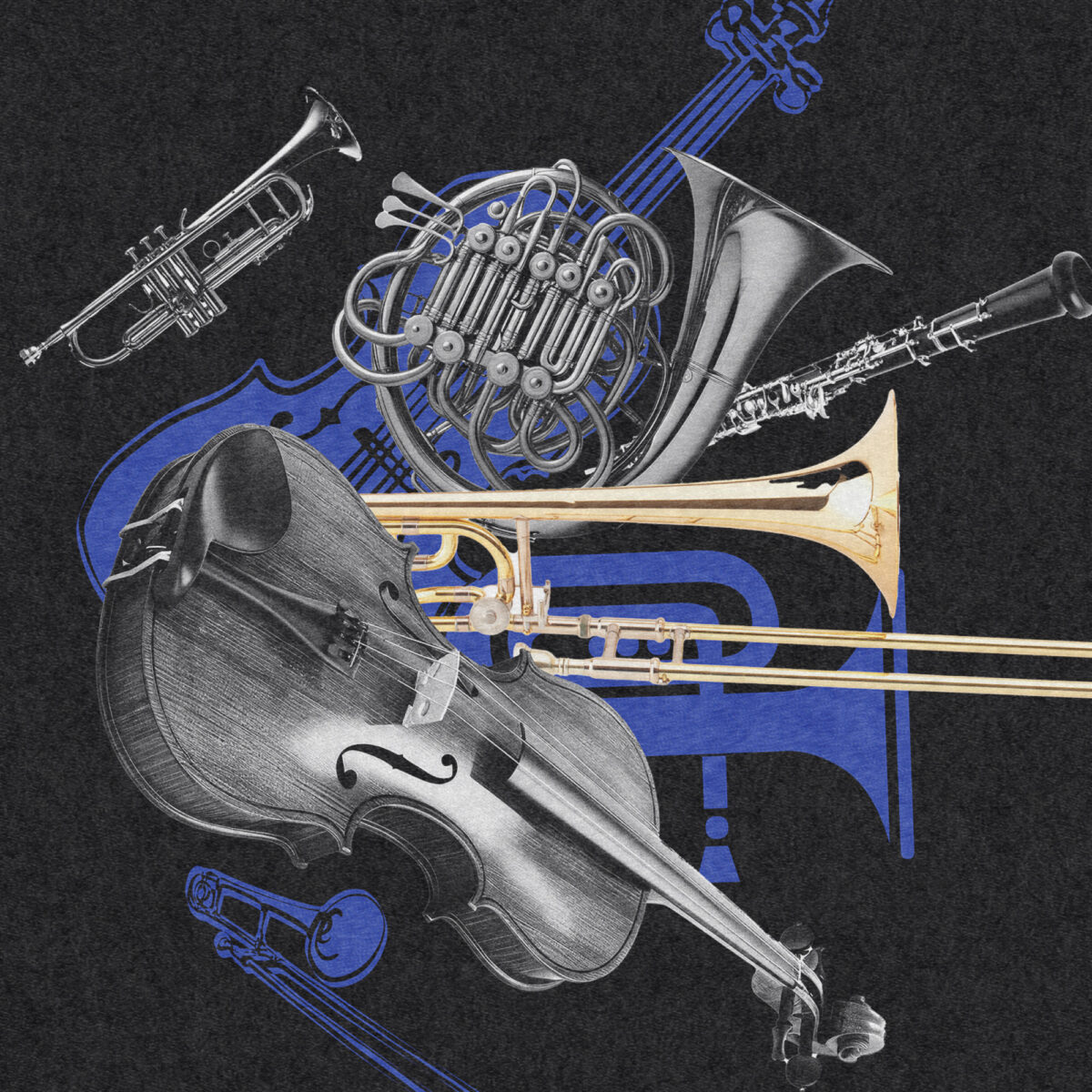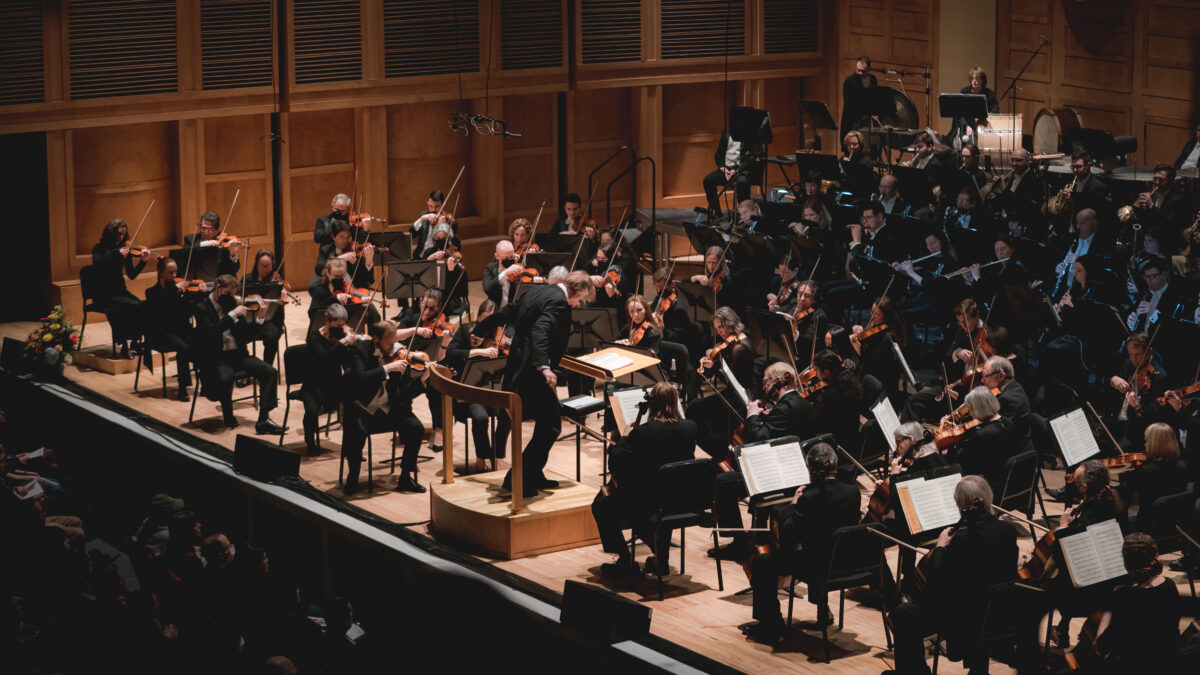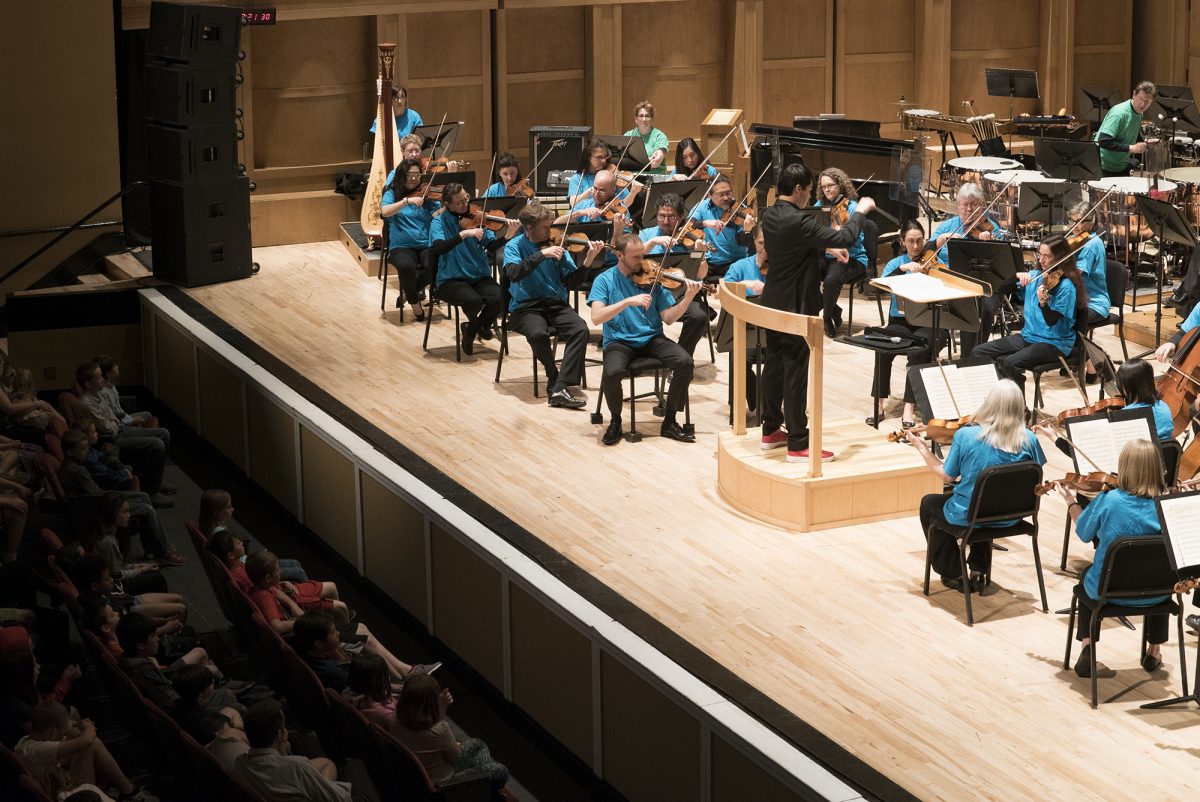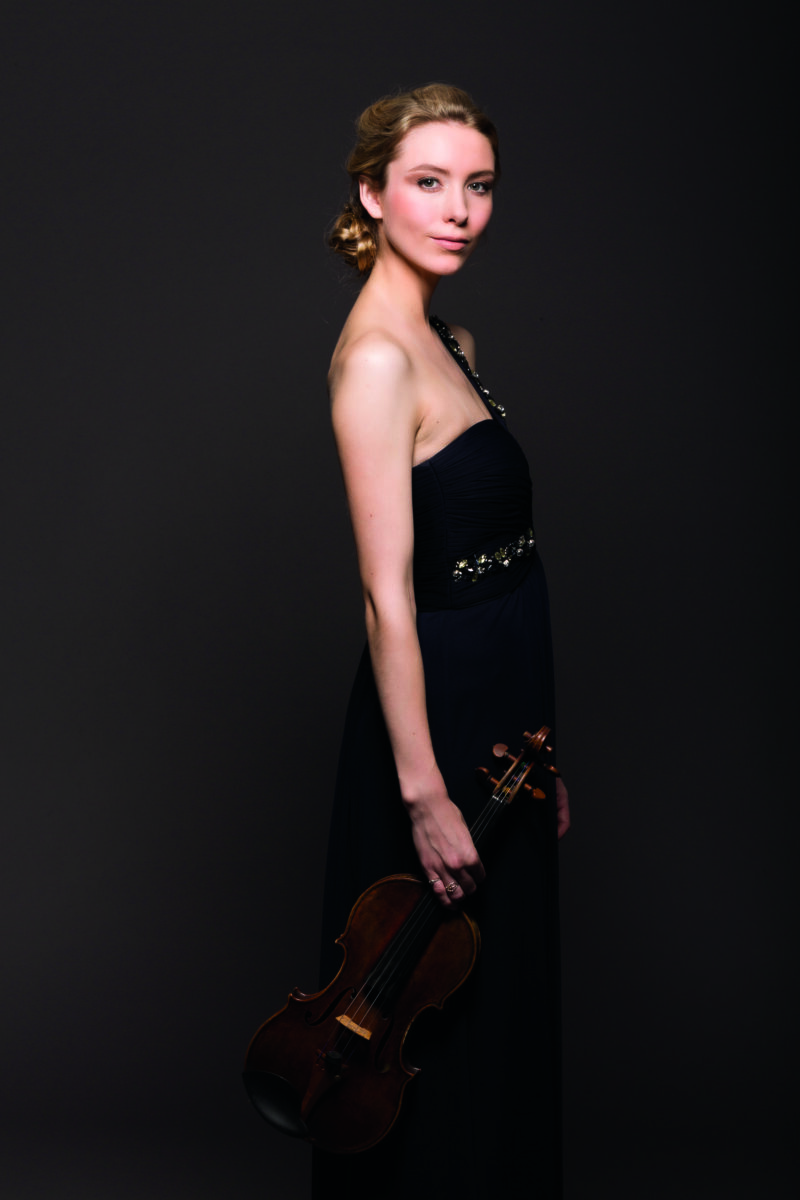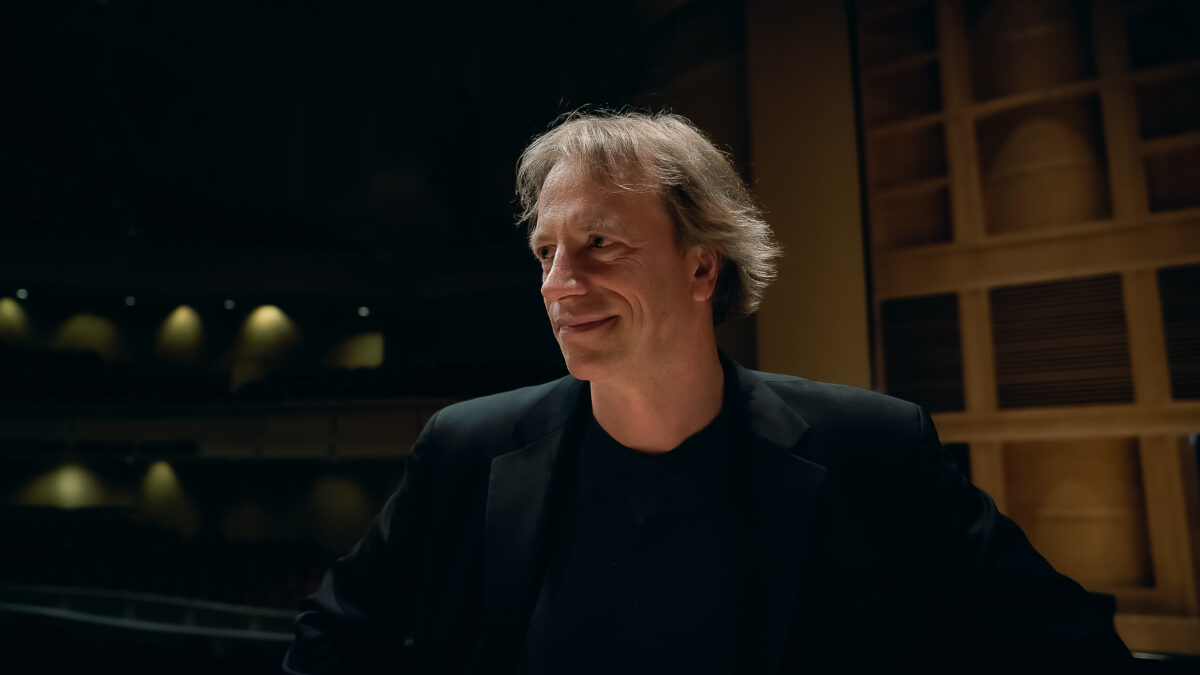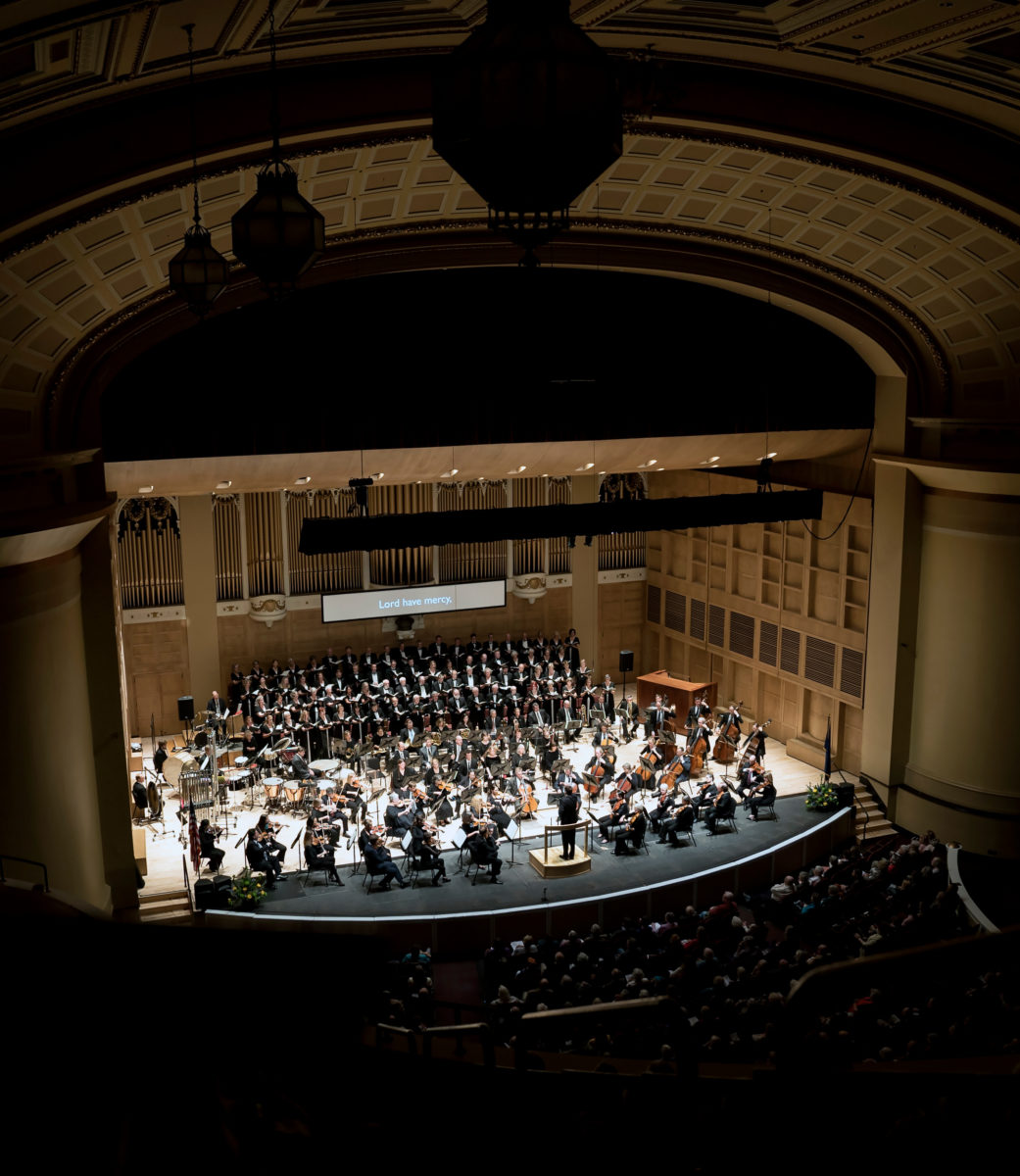Violins of Hope: Verdi’s Requiem Program Notes
Max Bruch
Kol Nidrei for violoncello and orchestra, Adagio on Hebrew Themes
This work by the German composer Max Bruch (1838-1920) remains one of his most popular, along with his first violin concerto and his Scottish Fantasy. Three symphonies, two additional violin concertos, numerous choral and chamber works are largely unheard today, though curious listeners can find many of them online. Throughout the composer’s long life, he remained busy composing, teaching and conducting, in Germany but also in England, where he led the Liverpool Philharmonic from 1880 to 1883.
It was in Liverpool that he wrote Kol Nidrei for the cellist Robert Hausmann but also to acknowledge the substantial Jewish population there. The piece is based on two “Hebrew Themes” shared with Bruch by his friend Abraham Lichtenstein, who was chief cantor of the temple in Berlin. The first melody, stated by the cello at the work’s outset, is an ancient one traditionally intoned before the evening Yom Kippur service. Kol Nidreimeans All Vows. In this part of the service all (false) vows made in the past year and coming year are repudiated. The second melody was written for Lord Byron’s “O Weep for Those that Wept by Babel’s Stream” sometime after the poem appeared in 1815. It is first heard in the woodwinds, then repeated and varied in the solo cello. Byron’s poem begins:
“Oh! weep for those that wept by Babel’s stream,
Whose shrines are desolate, whose land a dream;
Weep for the harp of Judah’s broken shell;
Mourn – where their God hath dwelt the godless dwell!”
Bruch’s heartfelt treatment of these themes, and possibly even his willingness to base a concert work on them, led many to assume that he was Jewish himself, when in fact his was a practicing Lutheran. This assumption nonetheless proved persistent enough that the Nazis prohibited performances of his music during their years in power. It has been suggested that this long performance hiatus, along with the conservative nature of Bruch’s music, contributed to the disappearance of much of it from modern concert programs.
With the availability of so much of every kind of music online, we can decide for ourselves whether this relative obscurity is deserved. Bruch at his best writes music of spirit and conviction. He is a gifted melodist. He is formally secure, sometimes innovative, excelling especially in smaller forms. He makes the orchestra glow, with especially effective writing for winds and brass. Solo instruments are treated sympathetically. (For an example of how nicely he could write for an unusual solo instrument, listen to his Romanze, Op. 85 for Viola and Orchestra.)
Kol Nidrei showcases the solo cello perfectly, cloaking its mellow, vocal sound in burnished colors. There are moments of hushed reverence and others of passionate utterance. Bruch apparently viewed these melodies as being from the realm of folk music, using them in the same way he did Scottish folk songs in his Scottish Fantasy, Op.46 or Swedish folk songs in his Swedish Dances, Op. 63. Nonetheless, the seriousness of the work , and its simplicity, make it feel, if not especially ethnic, certainly like a prayer or meditation, a moment of reflection in busy modern lives.
-Martin Webster
********
John Williams
Theme from Schindler’s List
American composer John Williams (b. 1932 in Queens, NY) grew up in Los Angeles. His parents were New Englanders—father from Bangor, ME, mother from Boston—but moved to southern California to find work in the thriving entertainment business there. Williams was drawn while young to the LA music scene, studying while in high school with composer Mario Castelnuovo-Tedesco. After graduation from high school, he joined the Air Force band, where he played piano and wrote arrangements. Leaving the band, he attended the Juilliard and Eastman schools of music before returning to Los Angeles in the late 1950s to begin his now legendary work for film. He began by writing orchestrations and arrangements for some of the great film composers including Franz Waxman, Bernard Herrmann and Alfred Newman, at the same time working as a pianist, recording scores for Henry Mancini and Elmer Bernstein, among others.
Williams eventually formed musical partnerships with film directors Steven Spielberg and George Lucas. A brief list of his most famous scores includes most of the films for Star Wars, Jaws, Superman, ET, Indiana Jones, Jurassic Park and Harry Potter. His work for Hollywood has been recognized with numerous awards including three Emmys, four Golden Globes, twenty-five Grammys, five Academy Awards and five Oscars.
For the Boston Pops, John Williams served as Principal Conductor from 1980 to 1993. He has also conducted many other orchestras including the Los Angeles Philharmonic, the Vienna Philharmonic and the Berlin Philharmonic. Musicians who have played under his baton admire his economical gestures and keen awareness of all that is going on in the orchestra.
Along with his prolific output for the movies, the composer has also produced concertos, often written for friends and colleagues, for nearly every instrument of the orchestra except trombone, tuba and bass. Now, his ninetieth birthday safely behind him, he has retired from film scoring to have more time to write concert music. His Violin Concerto No. 2 was premiered by the Boston Symphony with violinist Anne Sophie Mutter in September 2021.
Steven Spielberg’s Schindler’s List tells the harrowing tale of Oskar Schindler, a German businessman who saved over a thousand Polish Jews from death in Nazi camps. The story is often recounted that when Spielberg asked Williams to write the score, Williams, who was bowled over by the film, replied, “You need a better composer than I am for this film”. Spielberg replied, “I know, but they’re all dead.” Williams wrote the score. The theme is some of the simplest, most eloquent music he has written.
-Martin Webster
********
Giuseppe Verdi
Messa da Requiem
Giuseppe Verdi was born in 1813 in le Roncole, Italy, and died in 1901 in Milan. He completed his Requiem Mass in 1874, and conducted the first performance in Milan the same year. The work is scored for soprano, mezzo-soprano, tenor, and bass soloists, chorus, 3 flutes, piccolo, 2 oboes, 2 clarinets, 4 bassoons, 4 horns, 4 trumpets, 4 off-stage trumpets, 3 trombones, tuba, timpani, bass drum, and strings.
*****
When we encounter masses and other works based on religious texts, it is tempting to assume there is a relationship between the depth of feeling in those works and the faith of their composers. As we listen to such works by Bach, Beethoven, and even Stravinsky, we are on fairly safe ground. With other composers such as Handel and Mozart, things become a bit iffy. But what to make of a non-believer composing a requiem mass?
Verdi was an agnostic his entire adult life. He neither mocked religion nor even strongly disapproved of it, saying “to have faith is good, but not to rely on faith is better.” His wife (herself a believer) explained, “For some virtuous people a belief in God is necessary. Others, equally perfect, while observing strictly every precept of the highest moral code, are happier believing nothing.”
But Verdi was moved to his very core by the death of Alessandro Manzoni (1785-1873). Manzoni was one of the great Italian authors, perhaps the greatest after Dante. Verdi had revered the man since he was a teenager, considered him to be as much a national hero as an artist, and held him in awe when the two finally met. To Verdi the death of Manzoni was a catastrophe: “With him ends the greatest of our glories.” He was too disconsolate to attend the funeral, but as he visited Manzoni’s gravesite a few days later, he formed the idea for a tribute to the great man.
That tribute is Verdi’s Requiem. It is, as many have observed, the greatest opera that Verdi never wrote. And it is, with the possible exception of Berlioz’ Requiem, the most overtly dramatic sacred music ever composed. Its size and scope are immense, and its range of emotion breathtakingly wide. Yet it would be a mistake to call it an opera in disguise.
There is no dramatic story to a requiem mass, but there are dramatic words and emotions, as well as a spiritually profound question mark. Verdi was not just a master at setting words to music, but at illuminating their meanings and exploring their depth of emotion. In this respect the Requiem is every bit the equal of Verdi’s operatic masterpieces. Still, an essential element of opera—conflict between competing emotions and personalities—is entirely absent, as the soloists, chorus, and orchestra maintain a unity of purpose. And despite the occasional bombast, Verdi seemed to expect a higher standard of musicianship in the Requiem: “This mass must not be sung the way an opera is sung,” he wrote, “and the techniques that can be good in the theater will not be to my liking at all.”
The Requiem begins with quiet simplicity as the chorus intones “Grant them eternal rest, O Lord.” The music continues without pause to the Kyrie, led by the soloists, each with a different musical take on the text.
The Dies Irae (Day of Wrath) that follows is utterly terrifying, a catastrophic vision of the end of the world brought by the relentless bass drum, the whirling of scattered souls, and the chorus nearly shouting its words of doom. This music will return, most unusually, later in the mass—a reminder, perhaps, that while salvation is uncertain, the end of the world is not. The amazing brass choirs that herald the coming of the Judgment Day have no consolation for us, either.
The Dies Irae has begun the longest movement of the mass, called the sequence, which is made of shorter sections with a variety of texts. Each is a prayer, and in a way a reaction to the realization the Dies Irae has brought: out of our fears comes our pleas for mercy. This music is hugely evocative: it is a “King of awful majesty” indeed (Rex tremendae), yet the tenderness of our pleas (Recordare, Ingemisco, oro supplex, lacrimosa) is exquisite.
The Offertory begins with the first signs of hope, as the cellos lead the soloists in the wish to be delivered “from the mouth of the lion.” The Sanctus is a stirring fugue, a small nod Verdi gives to tradition.
After that fugue, the Agnus Dei’s utter simplicity comes as quite a shock; perhaps it is simple because we have arrived at the central wish the living have for the dead: “grant them eternal rest.” Lux aeterna is an episodic piece for the soloists, while Libera me is stunning in its unexpected chants from the soprano soloist and the chorus. As the music evolves it becomes more and more operatic, and the return of the Dies irae makes what few rays of hope there have been seem tenuous at best. Ultimately a great fugue brings us back to the chants that began the movement.
Verdi’s Requiem premiered in Milan exactly one year after Manzoni’s death, at St. Mark’s church and later at La Scala. It was an enormous success, and Verdi was soon invited to conduct the work all over Europe. It was not received equally well in all quarters, however. The church made known its preference for cooler, more traditional sacred music, and some critics blasted the work as wildly inappropriate. This didn’t faze Verdi one bit. To him the Requiem was a grand public tribute to a great man, based on a libretto rather more profound than usual. Despite its purpose, Verdi managed to bring to life the two great and powerful themes of any requiem—fear, and hope—to believers and non-believers alike.
-Mark Rohr*
*Mark Rohr was the Portland Symphony Orchestra’s Bass Trombonist from the mid-1980’s and program annotator from 1991 until his passing in 2019. We are privileged to continue publishing his program notes at his bequest.







